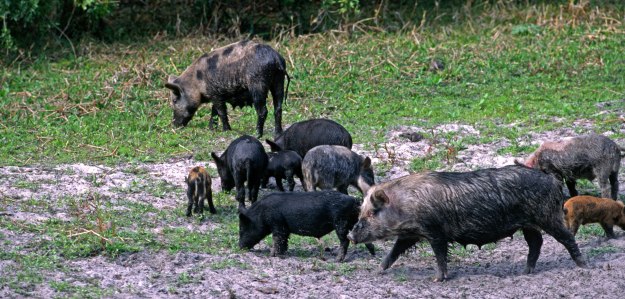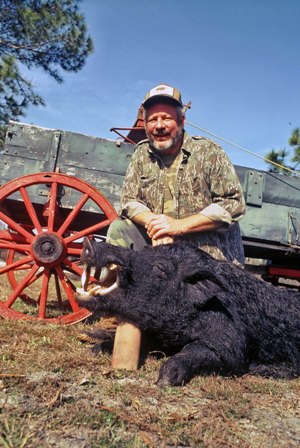
Editor’s Note: Forty-seven year old Kevin Faver of St. Augustine, Florida, is a charter-boat captain. “But I always tell people I fish to hunt,” Faver says. “I’ve been wearing Mossy Oak my entire hunting career and been on the Mossy Oak Pro Staff for 5 years.”
For many years, Florida was the number-one state in the country for raising cattle. Yes, here in Florida, we produced more cattle than Texas and what other people think of as other big cattle states. Even today, I think we still rank in the top-5 cattle-producing states in the nation. For many years, we were also the number-one state for producing hogs. My dad was a Florida Cracker, a term that came from cattle ranching. At this time, ranchers in Florida used bull whips to drive the cattle. The cracking sound of a bull whip when it reached its full extension and was quickly jerked back helped move the cattle through the palmettos. So, the nickname for people in Florida – Florida Crackers – came from the early days of cattle ranching here in the Sunshine State.
 Although the fence law was enacted much earlier nationwide, in many parts of Florida, some of the cattle weren’t put behind fences until the early or mid 1970s. And, no one ever could round-up all the hogs. Florida had a much-longer history of free-range cattle and hogs than Texas or other states that practiced free-range ranching. My family was the caretaker on 6,000 acres. Today, this land is a state WMA. Every 6 months, we had a wild and crazy adventure when we got on our horses and rounded-up the cattle out of the swamps to worm and medicate them.
Although the fence law was enacted much earlier nationwide, in many parts of Florida, some of the cattle weren’t put behind fences until the early or mid 1970s. And, no one ever could round-up all the hogs. Florida had a much-longer history of free-range cattle and hogs than Texas or other states that practiced free-range ranching. My family was the caretaker on 6,000 acres. Today, this land is a state WMA. Every 6 months, we had a wild and crazy adventure when we got on our horses and rounded-up the cattle out of the swamps to worm and medicate them.
The cattle in Florida ate the leaves of the palmetto like cattle in other states ate grass. The roundups worked well for the cattle, but we never could round-up all the free-ranging hogs. To try and get the hogs out of the swamps, we used dogs and lead. We tried using traps, but the hogs wised-up to these fairly quickly. One sow can breed twice in one year, and the females in each litter can be bred at 6 months of age. So, before too long, a region can home way-too-many feral hogs. Actually most Florida deer hunters will have much-better opportunities to take feral hogs than they will to take deer with bows or guns. Because there is so much vegetation for both the hogs and deer, these animals don’t seem to compete with each other for food.
In Florida, we are allowed to bait, and you can put out corn. I’ve noticed that very seldom will you see hogs and deer feeding at the same bait site. So, when we’re deer hunting here in Florida, in certain places, we are much-more likely to take a hog with a bow or gun than we are to take a deer. I’m pretty sure on the lands that I hunt and probably throughout the state of Florida, that the feral-hog population is much greater than the deer population. With my PSE EVO bow, I feel really lucky, if I take three hogs and three deer per season. With a rifle, this number drastically can increase.
Day 2: Florida Deer Hunting – Human Odor, Bugs, Snakes and Alligator
Tomorrow: ProStaffer Kevin Faver’s Biggest Buck



























